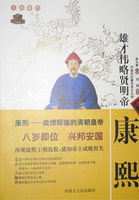There are two leading features in ancient demesne socage: it is certain in tenure and service, and it is held by the custom of the manor and not by feoffment. The certainty of the tenure severs the class of socmen from the villains, and is to be found as well in the case of socmen outside the crown demesne as in the case of socmen on the crown demesne. What is to be said of the second. trait? It seems especially worthy of notice, because it cannot be said to belong to freehold generally. As to its existence on ancient demesne land I have already had occasion to speak, and it can hardly be doubted. I will just recall to the reader's mind the fundamental facts: that the 'little writ of right' was to insure justice according to the custom of the manor, and that our documents distinguish in as many words between the customary admittance of the socman and the feoffment of the freeholder. This means, that in case of litigation the one had warranty and charter to lean upon, while the other had to appeal to the communal testimony of his fellow-suitors in the court of the manor, and in later days to an entry on the court-roll. Freehold appeared as chartered land (book-land), while socage was in truth copyhold secured by communal custom.(42*) The necessary surrender and admittance was performed in open court, and the presence of fellow-tenants was as much a requisite of it as the action of the lord or his steward.
If we look now to the socmen outside the ancient demesne, we shall find their condition so closely similar, that the documents constantly confuse them with the tenants of the ancient demesne.
The free men under soke in the east of England have best kept the tradition, but even their right is often treated as a mere variation of ancient demesne.(43*) For this reason we should be fairly entitled, I think, to extend to them the notion of customary freehold. There is direct evidence in this respect. In extents of manors socmen are often distinguished from freeholders.(44*) True, as already said, that in the king's courts 'free socage' came to be regarded as one of the freehold tenures, and as such (when not on the ancient demesne) was protected by the same actions which protected knight-service and frankalmoign; but we have only here another proof of the imperfect harmony between legal theory and manorial administration. What serves in the manorial documents to distinguish the 'socman' from the 'freeholder' is the fact that the former holds without charter.(45*) We are naturally led to consider him as holding, at least originally, by ancient custom and communal testimony in the same sense as the socmen of ancient demesne. In most cases only the negative side, namely the absence of a charter, is mentioned, but there are entries which disclose the positive side, and speak of tenants or even free tenants holding without charter by ancient tenure.(46*) It is to be added, that we find such people in central and western counties, that is outside of the Danelagh. In Domesday their predecessors were entered as villains, but their tenure is nevertheless not only a free but an ancient one.
It must also be added that it is not only free socmen that one finds outside the ancient demesne; bond socmen are mentioned as well. Now this seems strange at first sight, because the usual and settled terminology treats villain socage as a peculiarity of ancient demesne, My notion is that it is not 'bond' that qualities the 'socmen,' but vice versa. To put it in a different way, the documents had to name a class which held by certain custom, although by base service, and they added the 'socman' to qualify the 'bond' or the 'villain.'
Two cases from the Hundred Rolls may serve as an illustration of this not unimportant point. The vill of Soham in Cambridgeshire (47*) was owned in 1279 partly by the King, partly by the Earl Marshall, and partly by the Bishop of Ely. There are two socmen holding from the King thirty acres each, fourteen socmen holding fifteen acres each, and twenty-six 'toftarii'
possessed of small plots. No villains are mentioned, but the socmen are designated on the margin in a more definite way as bond socmen. The manor had been in the possession of the Crown at the time of the Conquest, and it is to be noticed, to begin with, that the chief population of the part which remained with the King appears as socmen -- a good illustration of the principle that the special status did not originate when the manor was granted out by the Crown. The sixteen peasants first mentioned are holders of virgates and half-virgates, and form as it were the original stock of the tenantry -- it would be impossible to regard them as a later adjunct to the village. Their status is not a result of commutation -- they are still performing agricultural work, and therefore bond socmen. The Domesday Survey speaks only of villains and 'bordarii,' and it is quite clear that it calls villains the predecessors of the 'bond socmen' of the Hundred Rolls. And now let us examine the portion of the manor which had got into the hands of the Earl Marshall. We find there several free socmen whose holdings are quite irregular in size: they pay rent, and are exempted from agricultural work.
Then come five bond socmen, holding thirty acres each, and nine bonds holding fifteen acres each: all these perform the same services as the corresponding people of the King's portion. And lastly come twenty-two tofters. Two facts are especially worth notice: the free socman appears by the side of the bond socman, and the opposition between them reduces itself to a difference between rent-paying people and labourers; the holdings of the rent-payers are broken up into irregular plots, while the labourers still remain bound up by the system of equalised portions. The second significant fact is, that the term 'socman,'















